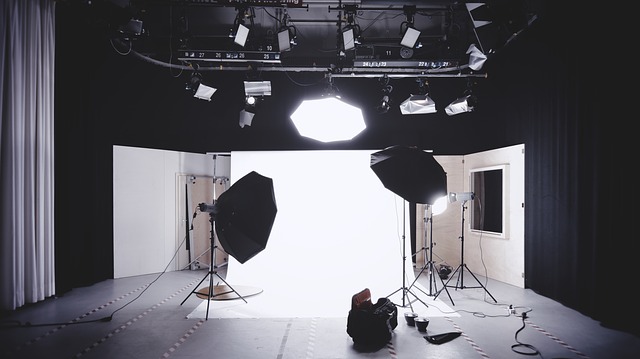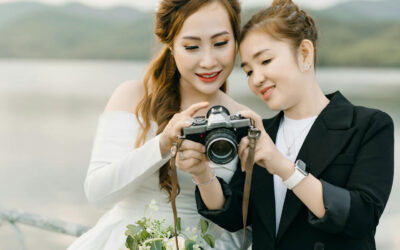Every reputable wedding videographer knows that external sources of light are essential. You cannot just rely on venue lights. Bringing your own equipment will help you overcome multiple challenges. You will produce great footage, even if the venue is dim or you have to shoot an outdoor wedding in the evening.
Making the most of portable lights and projectors depends on strategic placement. You will need to check venue specifics in advance. It’s also essential to have a good idea about the quality and capabilities of your equipment.
Here are several tips put together by the best wedding videographers that will teach you how to make the most of external lights.
Understand the Difference between the Types of Video Lights
As a professional wedding videographer, you should know how external sources of light differ from each other. The market features many products. It’s up to you to experiment with lights and illumination accessories until you discover the best ones.
Such knowledge will make it much easier to select the right equipment for each videography shoot.
Needless to say, the sun is always to be factored into the equation. You need to know where the sun is and you need to know whether the reliance on natural light is sufficient.
Reflectors and bounce boards are excellent types of videography equipment. These allow you to bounce and redirect either natural or artificial light to a spot that you need to have illuminated. They can also help you balance out shadows. Reflectors and boards are low-cost equipment options you need to add to your wedding video arsenal.
A flash that gets mounted on your camera is a lightweight and efficient option. It will ensure good illumination right in front of you. Make sure you have at least one flash that’s compatible with your camera and that will give you better light on the go.
Finally, standing projectors can be mounted at the wedding venue.
A projector remains fixed and it’s a good choice for illuminating the dancefloor, for example. Projectors are costlier and bulkier. You will also need to have those positioned in advance and you’ll also have to make sure they’re not getting in the way of the celebration.
While less flexible than other lights, projectors deliver amazing illumination. They’re the go-to piece of equipment for dim venues, outdoor or night time parties.
The Rule of Three-Point Lighting
Let’s talk about light setup.
A general rule of thumb is to set up three-point lighting.
Three-point lighting is a videography term that refers to a configuration consisting of a key light, a fill light and a backlight.
Key light is defined as the primary source of light. It is most intense and it’s also direct. The fill light is used to cancel out shadows. Usually, it is placed opposite to the key light. The fill light is less powerful and it can eliminate the shadows cast by the key light.
Finally, the backlight illuminates from behind and it gets placed higher than the subject or object it is lighting. The backlight adds depth to the footage and makes it more three-dimensional.
Light Color Temperature Matters
As a wedding videographer, you should look beyond light intensity and placement.
The color temperature of the projectors you use matters.
Color temperature is measured in Kelvin (K). Cool tones like daytime light have a higher reading of about 10,000K. Warm lights like the sunrise or sunset have a lower temperature of about 3,000K. Candlelight has a temperature of about 1,000K.

To get best results, avoid mixing cool and warm light temperatures.
A mix between the two varieties will create issues with your footage’s color balance that will be difficult to address during the wedding video editing process.
Use the Lights You Feel Most Comfortable with
There are multiple ways to get the exact same result.
While textbooks have certain rules videographers should follow, it all boils down to convenience.
You will have to pay attention to many things during the wedding shoot. Hence, moving around lights and making sure you have the ideal setup isn’t always possible.
Visit the venue in advance and talk to the wedding planner about the types of illumination that will be utilized. Is there a projector that illuminates the wedding ceremony spot? Will the tables feature candles or lanterns? Such preliminary information will help you come up with an action plan.
If you believe you can get a good result with a camera-mounted external flash, trust your gut. The placement of projectors isn’t always possible, especially if the venue is small. In such instances, you’ll need to maintain your flexibility instead of adhering strictly to textbook setups.
A Final Rule for the Videographer for Wedding Ceremonies: Beware of Glares
The final thing to pay attention to is glare.
Your projector can easily produce glares when the light is reflected in glasses and shiny surfaces. Thus, you should always do a preliminary test to determine what the right spot is.
Things get a bit trickier when you’re using mobile, camera-mounted flashes. Move around and experiment with the setup. If possible, repeat some of the shots that appear to feature glares in them. For even better results, bring a second videographer to the venue. This way, you will have shots created from different locations. Not only will you ensure quality, you can give your clients a bit of diversity this way.
These are the basic rules to keep in mind but once you master the essentials, you can start experimenting with light.
Such experiments can produce some highly creative results, especially if your clients are looking for a modern or a somewhat abstract / artistic wedding video.
You can accomplish a lot through creative light placement and camera setting adjustments. If you are getting into such experiments, however, make sure that you’ve discussed the results with your clients. Inform them of the approach you plan to adopt and get their consent. Otherwise, you risk having one quite unhappy bride who hates your artistic vision.
Looking for a wedding video editor?
Get a free quote within 24 hours!
Important Skills Every Wedding Videographer or Photographer Needs to Have
Looking for a wedding video editor? Get a free quote! Being amazing at your job as a wedding videographer or photographer is great but that’s not enough to make your business sustainable and successful in the long run. Soft skills and business skills are equally...
Ways to Book More Gigs as a Second Wedding Shooter
Looking for a wedding video editor? Get a free quote! Finding opportunities to work as a second wedding shooter will help you expand your portfolio and acquire much-needed experience. That’s a wonderful opportunity for beginners and for those interested in expanding...
Streamline Your Videography or Wedding Photography Business Workflow: Here’s How
Looking for a wedding video editor? Get a free quote! Running a wedding photography business or a videography business often involves handling large volumes of work on multiple projects at the same time. This specific can result in two problems – serious delays in end...
9 Important Checks Wedding Photographers and Videographers Need to Complete Before the Event
Looking for a wedding video editor? Get a free quote! Experienced wedding photographers and videographers know one thing – the day of the event is almost always chaotic. The mayhem that often ensues requires a lot of preliminary work to get organized and account for...
Time-Saving Editing Hacks for Busy Wedding Photographers
Looking for a wedding video editor? Get a free quote! Wedding photography editing is no joke. Depending on the volume of work you have to process and your client’s requirements, it can be incredibly labor-intensive. This is why many photographers struggle with...








0 Comments